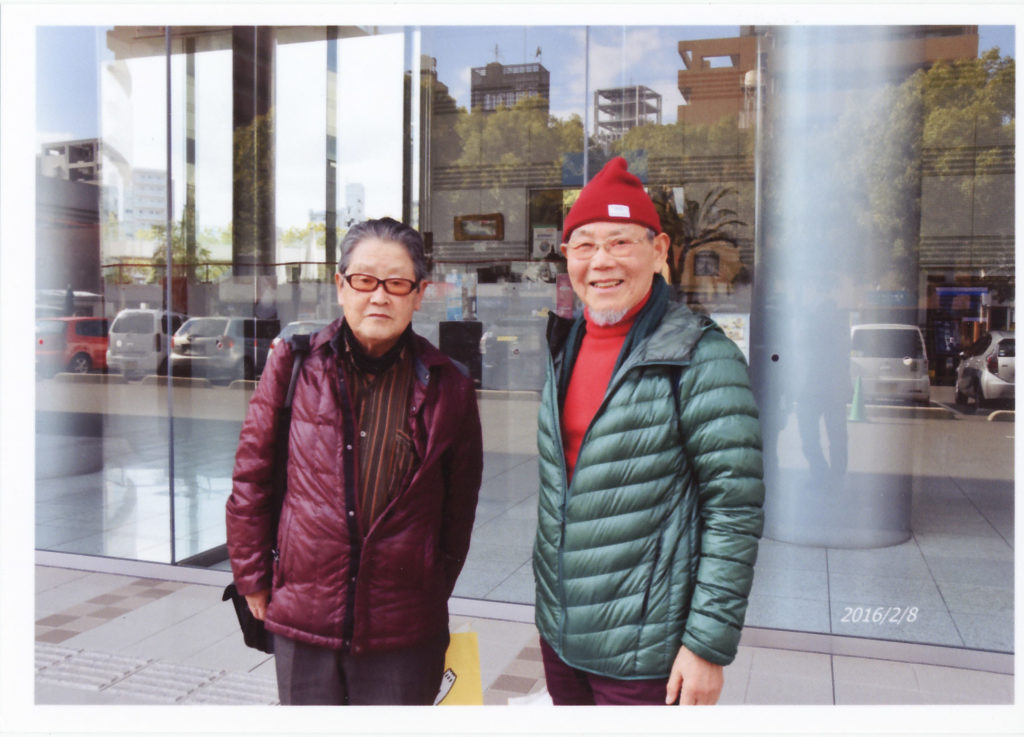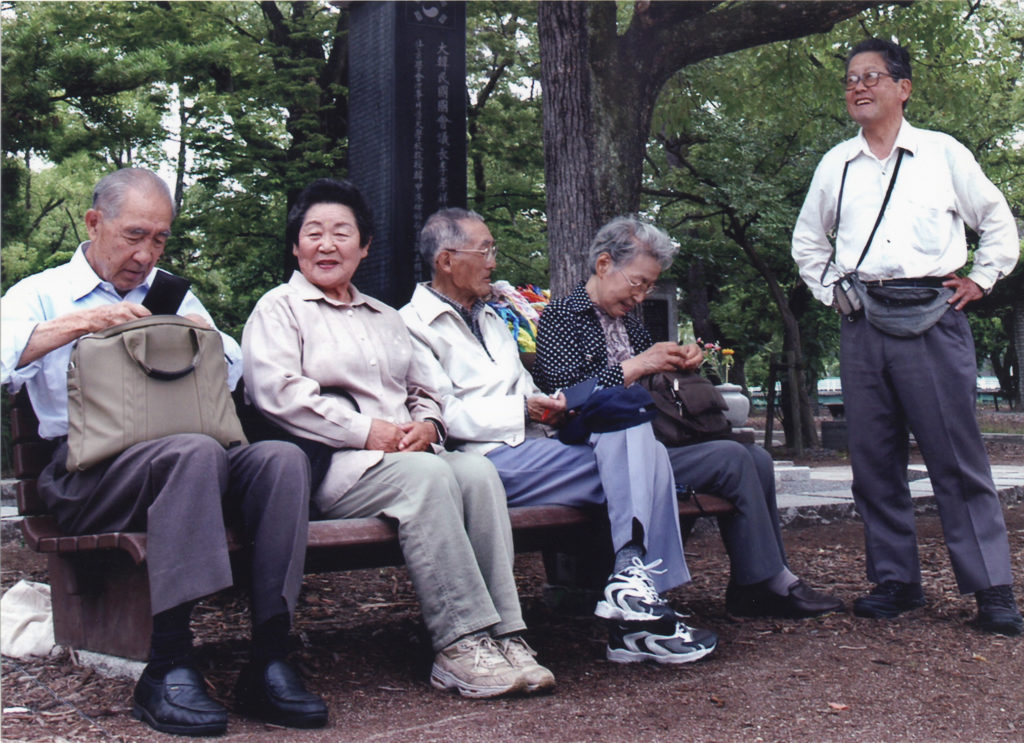Keisaburo Toyonaga
My Life Dedicated to A-bomb Survivors Overseas
9. Beginning to Give My A-bomb Testimony to Students Who Visit Hiroshima on a School Trip
In 1983, several teachers from Osaka Prefectural Nishinari High School came to Hiroshima to visit A-bomb victim organizations separately and find 15 A-bomb survivors who would talk about their A-bomb experiences. They wanted their students to have the opportunity to listen to an A-bomb testimony. One of them came to our Hiroshima Electric High School, and I told him that I was also an A-bomb survivor. The teacher urged me, “If so, please testify about your experiences.” I hadn’t ever talked about my A-bomb experiences, but considering those teachers’ hard work, I accepted this request with hesitation. The teachers often visited Hiroshima and found 15 hibakusha over a period of months.
In November, 1983, 220 students from Nishinari High School came to Peace Memorial Park. I was surprised to see them. Though I had heard about the students from the teachers, I felt anxious to see them. Some girls were wearing flashy clothes, accessories or makeup, and some boys in sloppy clothes looked indifferent listening to us. Each of the 15 A-bomb survivors accompanied 15 to 20 students on a field trip of Peace Memorial Park, but almost half of the students disappeared along the way. They were staying at the Noga Highland Hotel in the mountains of Hatsukaichi City, so they wouldn’t go out at night. In the evening, we went to the hotel by minibus, and all survivors gave their testimonies to students divided into groups again. Even during our presentations, some students lay sprawled out or kept chatting with students around them. However, as we continued our talk, we knew they were listening attentively. While we were waiting in the return bus to leave, two girls ran to us and said with tears, “We have never heard a story like this in my life. Please keep talking to many children about your experiences.”
At that time, each school sent their teachers to Hiroshima in advance to find A-bomb survivors and ask them to give their testimonies. So, after finishing our testimonies on that day, we 15 speakers decided that we should form an association of A-bomb survivors to share our testimonies with school trip students. We met several times after that, and in 1984, 13 of us launched the group, The Speakers from Hiroshima. This was the first group that didn’t belong to any public institutions or hibakusha organizations and consisted of only A-bomb survivors. (Now, the system is so well established that the Outreach Division in Peace Memorial Museum assigns A-bomb survivors to school excursions to give their testimonies,)
The next year, Hiroshima was not chosen as a school trip destination of Nishinari High School. However, one boy student, who had come to Hiroshima on the school trip the year before, became a student council member. He recruited participants and brought 58 students and 15 teachers to Hiroshima on two buses during summer vacation. This was a really nice surprise. Of course, our group gave them our testimonies.
Several years after the formation of our group, I told my mother that we didn’t have enough survivors to give our A-bomb testimonies. Then, she said to me, “Shall I tell my A-bomb experience, too?” She hadn’t been involved in any testimony activity before that, so I felt very surprised and happy. In her testimony, my mother said, “My body was burned at the time of the A-bombing, but my heart was also burned.” I had never heard these words from her. Behind the words, “My heart was also burned,” I couldn’t help but wonder what painful experiences she had had in her life.
Our members numbered up to 30 at most. We shared our testimonies with about 40,000 students in a year, but over time, some members passed away and others became unable to tell their A-bomb experiences due to their health conditions. Our group was disbanded in 2001, and the rest of the members registered with the Outreach Division in Peace Memorial Museum as the Citizens for Supporting South Korean Atomic Bomb Victims and continued our activities. I developed prostate cancer in 2003 and stomach cancer in 2007. I recovered from the cancers, but I thought that, as a person who has been kept alive, I must continue this activity. By 2023, all members of the group passed away except me. I could not bear the disbanding of the group and decided to revive The Speakers from Hiroshima. This time, membership was open to anyone affected by the atomic bombings, regardless of whether they have the Hibakusha Health Certificate. Currently, about 12 or 13 people are active.

